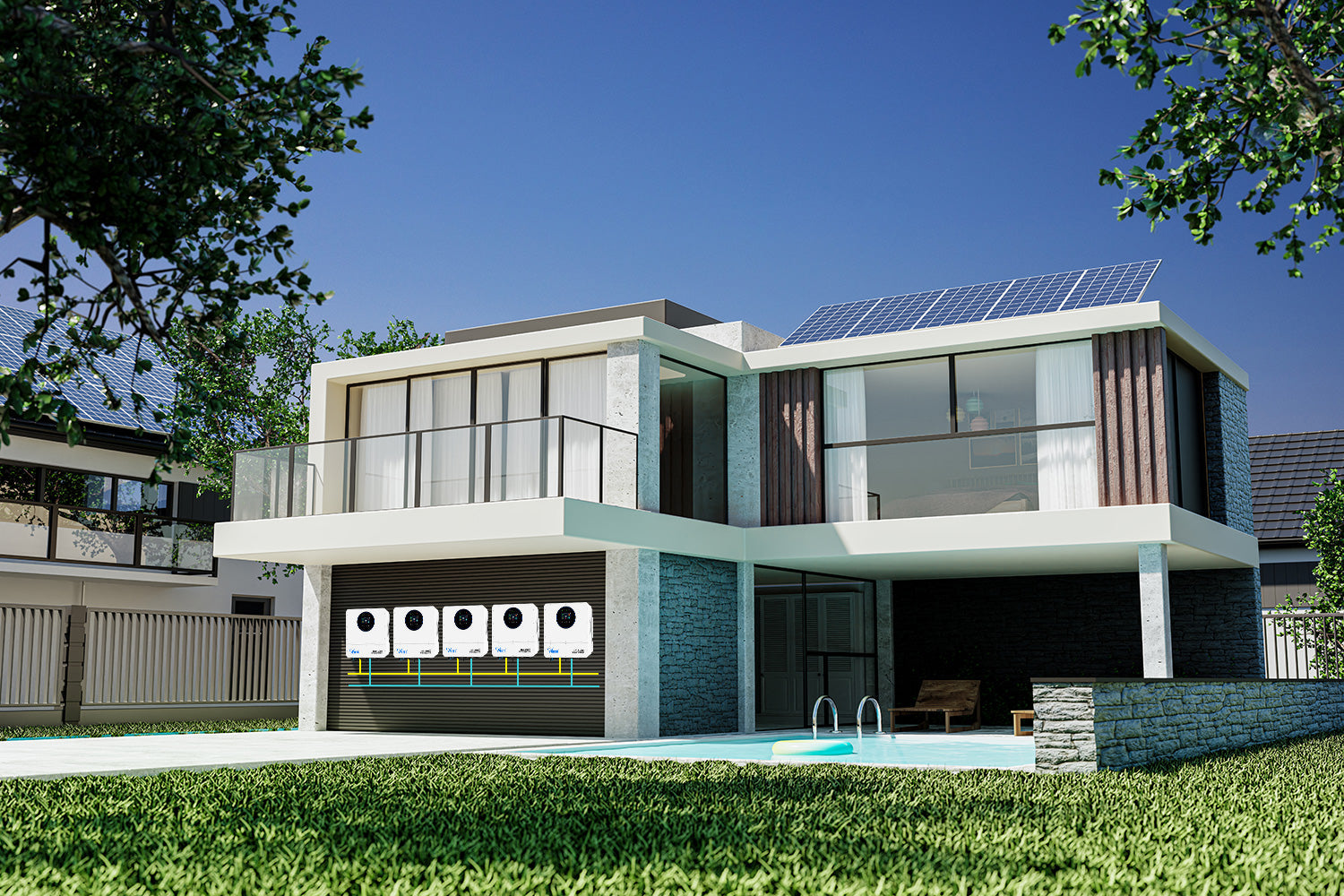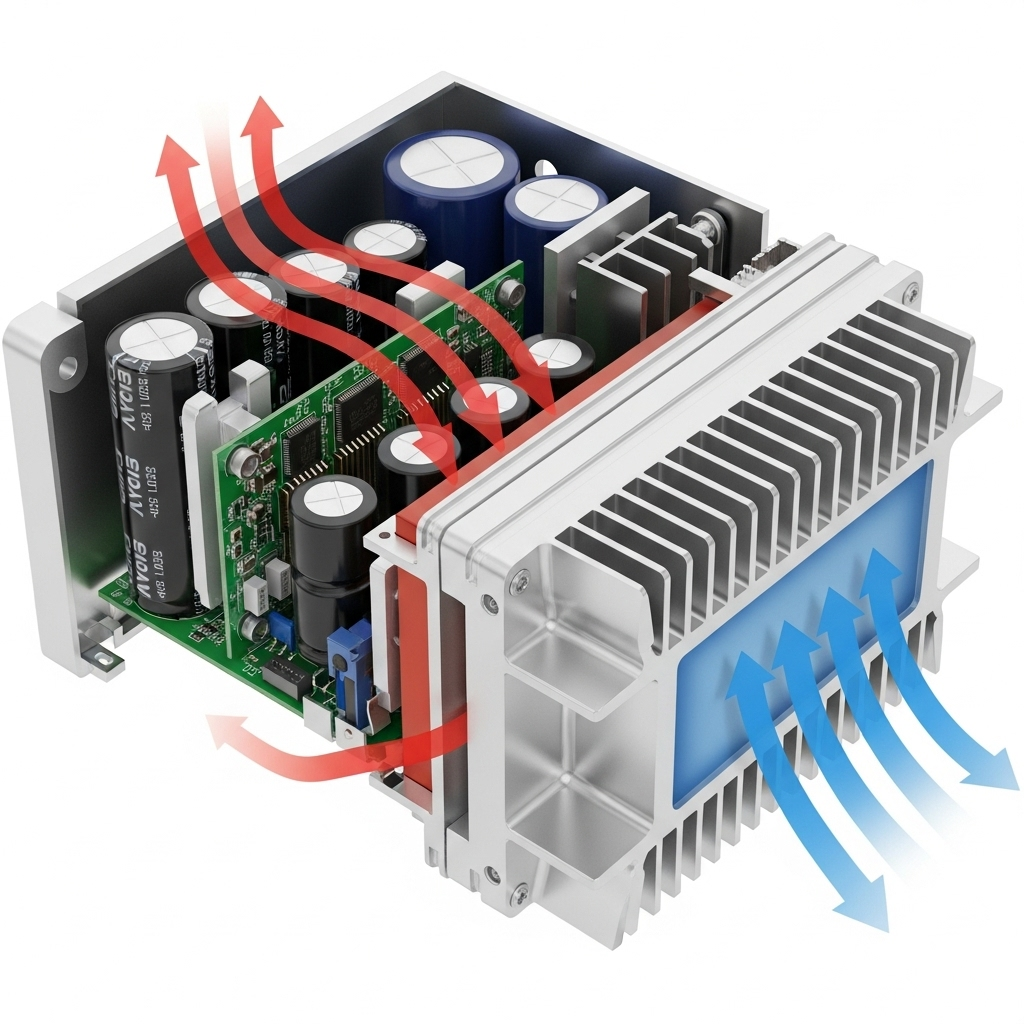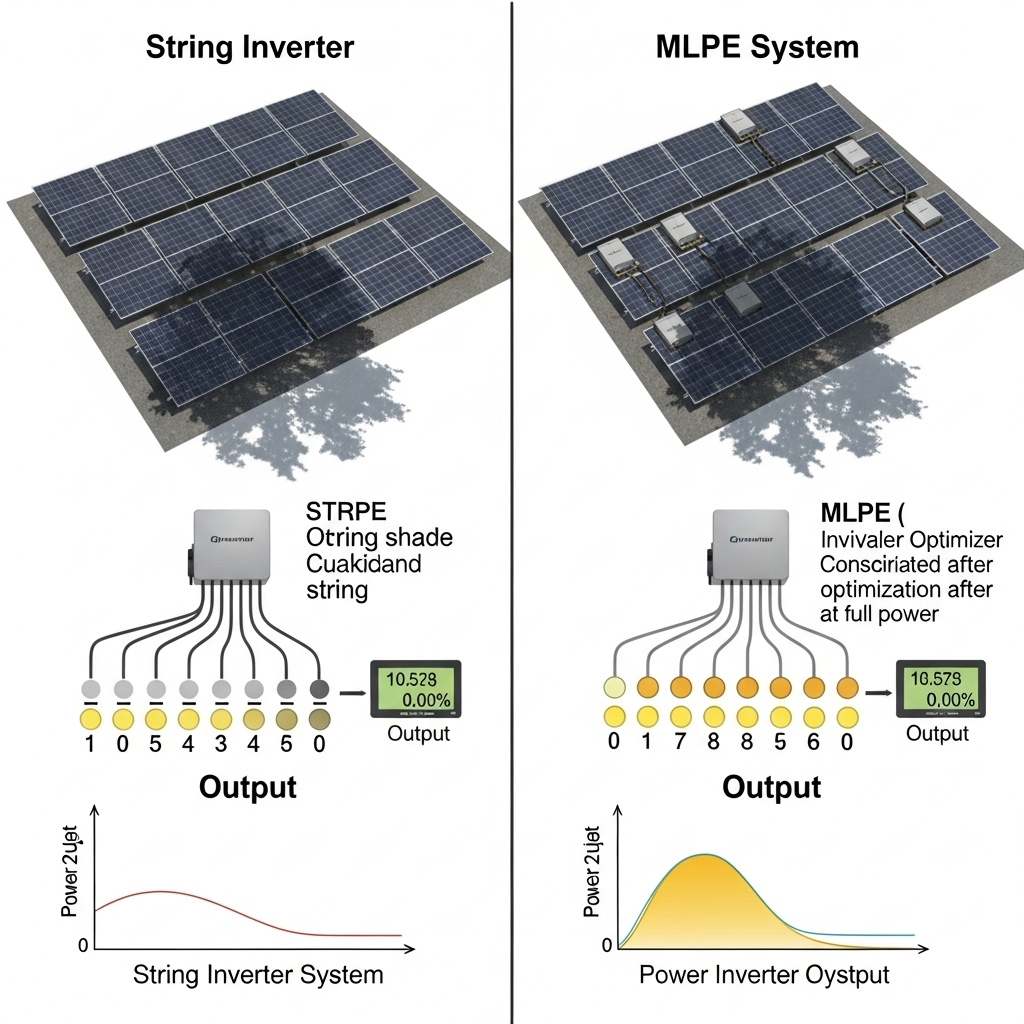Choosing a solar inverter is one of the most critical decisions you'll make for your photovoltaic (PV) system. The inverter acts as the brain, converting the direct current (DC) electricity your panels produce into alternating current (AC) that powers your home. The technology you select directly impacts your system's energy production, monitoring capabilities, and overall cost. This guide provides a detailed breakdown of the three primary inverter technologies: traditional string inverters, microinverters, and power optimizers.
Understanding the Core Technologies
Each inverter type has a distinct architecture. The way they are designed dictates their performance in different situations, especially on roofs with complex layouts or intermittent shading.
String Inverters: The Traditional Workhorse
String inverters are the most common and longest-standing technology in the solar industry. In this setup, solar panels are wired together in a series, creating a "string." The combined DC power from the entire string flows to a single, centralized inverter. This inverter then converts the power to AC electricity. For larger systems, multiple strings can connect to one inverter.
- How it works: A group of panels operates as a single unit. The performance of the entire string is limited by the output of the least productive panel. If one panel is shaded or dirty, the output of every other panel in that string is reduced to match it.
- Best for: Simple, south-facing roofs with no shading issues and a uniform panel layout. They are a proven, reliable, and cost-effective solution for these straightforward installations.
Microinverters: Panel-Level Power Conversion
Microinverters represent a shift to a decentralized approach. A small inverter is installed directly on the back of each individual solar panel. Each panel's DC output is converted to AC right at the source. The AC power from all panels is then combined and sent to your electrical panel.
- How it works: Each solar panel operates independently. Shading, debris, or a malfunction on one panel has no impact on the performance of the others. This maximizes the energy harvest from the entire system.
- Best for: Roofs with complex shapes, multiple angles, or intermittent shading from trees, chimneys, or vents. They also allow for easy system expansion in the future.
Power Optimizers: A Hybrid Approach
Power optimizers offer a middle ground, combining features from both string and microinverter systems. Like microinverters, a small electronic device called an optimizer is attached to each panel. However, these optimizers do not convert DC to AC. Instead, they condition the DC electricity from each panel and send it to a central string inverter for conversion.
- How it works: Each optimizer performs Maximum Power Point Tracking (MPPT) for its individual panel. This allows each panel to produce its maximum potential, regardless of the performance of other panels. The optimized DC power is then sent to the inverter more efficiently.
- Best for: Homeowners who want the performance benefits of panel-level optimization, like those with moderately complex roofs, but at a price point that is often lower than a full microinverter system.
Performance Under Real-World Conditions
Peak efficiency ratings on a spec sheet do not always translate to maximum energy production in the real world. Factors like shading, roof design, and soiling can have a significant impact on your system's daily output.
Shading and Complex Roofs
This is where the difference between technologies becomes most apparent. A single shaded panel on a string inverter system can drastically reduce the output of the entire string. In contrast, microinverters and power optimizers isolate the impact of shade, allowing the unshaded panels to continue producing at their full potential. If your roof has dormers, vents, or nearby trees, Module-Level Power Electronics (MLPE)—the category that includes microinverters and optimizers—will almost always yield more energy. For a deeper analysis, explore Shading, Soiling, and Mismatch: When MLPE Beat String Inverters.
System Monitoring and Management
Your ability to monitor system performance varies greatly by inverter type.
- String Inverters: Typically provide overall system-level data. You can see the total production of your solar array but cannot view the performance of individual panels.
- Microinverters and Power Optimizers: Offer sophisticated panel-level monitoring. You can track the output of every single panel through a web or mobile application. This makes it easy to identify and diagnose any issues, ensuring your system is always operating at its best.
Efficiency and Energy Yield
While most modern inverters have high peak efficiencies, the total energy yield over a day or a year is a more important metric. MLPE systems consistently produce more energy in non-ideal conditions. Our extensive testing, detailed in the Ultimate Reference for Solar & Storage Performance, shows that systems with MLPE can see a yield increase of 5-25% on roofs with intermittent shading compared to traditional string setups. The ability to mitigate production losses from minor shading or panel mismatch adds up to significant gains over the system's lifetime.
Cost, Reliability, and Long-Term Value
Choosing an inverter involves balancing upfront costs with long-term performance and reliability. A lower initial price might not deliver the best return on investment over 25 years.
Upfront Investment vs. Lifetime Cost (TCO)
The total cost of ownership (TCO) is a better measure than the initial purchase price. It considers the upfront cost, potential energy yield, and expected maintenance. You can learn more about the financial implications in our guide on Data-Driven TCO: Lifecycle Costs for Strings, Micros, Optimizers.
| Factor | String Inverters | Microinverters | Power Optimizers |
|---|---|---|---|
| Upfront Cost | Lowest | Highest | Moderate |
| Installation Complexity | Simpler | More complex (more components) | Complex |
| Energy Yield (Shaded) | Lower | Highest | High |
| Maintenance | Single point of failure, easy access | No single point of failure, difficult roof access | Two potential points of failure |
| Long-Term Value | Good for ideal sites | Excellent for complex sites | Excellent balance of cost and performance |
Reliability and Maintenance
Reliability is a key concern. A string inverter system has a single point of failure, but the unit is typically located in an easily accessible place like a garage or exterior wall for servicing. Microinverters have no single point of failure, but if one does fail, a technician must get on the roof to replace it. Power optimizers have components on the roof and a central inverter, creating two potential points for maintenance. At ANERN, we focus on engineering robust and durable solar inverters designed for longevity, minimizing potential service needs.
Safety and Compliance
Modern electrical codes often require a "rapid shutdown" function, which allows firefighters to de-energize the solar panels on the roof in an emergency. Microinverters and power optimizers inherently meet this requirement at the module level. String inverter systems often need additional components to achieve the same level of safety, which can add to the overall system cost. For more details, see our overview of Rapid Shutdown Compliance: Strings, Microinverters, Optimizers.
System Design and Future-Proofing
Your choice of inverter technology can affect your ability to expand your system or add energy storage in the future.
Scalability and System Expansion
If you plan to add more panels later, microinverters offer the most flexibility. You can add one or more panels easily, as each operates independently. With a string inverter, expansion is limited by the inverter's maximum capacity and the string's voltage requirements. It often requires replacing the central inverter to accommodate a significant expansion.
Integration with Energy Storage
As energy independence becomes more important, pairing solar with battery storage is increasingly common. At ANERN, we specialize in fully integrated home energy storage systems that combine high-performance LiFePO4 batteries with advanced hybrid inverters. These hybrid inverters can manage power from your panels, the grid, and your battery bank simultaneously. While all inverter types can be paired with batteries (using AC or DC coupling), a hybrid inverter designed for storage provides the most seamless and efficient solution. This is a crucial consideration for building a resilient energy system. Explore this topic further in Unlock Resilience: Optimizers and Micros vs Strings for ESS.
Making the Right Choice for Your System
The best inverter technology is the one that aligns with your property's characteristics, your energy goals, and your budget. There is no single "best" choice for everyone.
- Choose a String Inverter if: You have a simple, unshaded roof, and keeping the upfront cost as low as possible is your primary goal.
- Choose Microinverters if: Your roof is complex, has shading, you want maximum energy harvest from each panel, and you plan for future expansion.
- Choose Power Optimizers if: You want a balance of high performance in shaded conditions and a moderate cost, along with the benefits of panel-level monitoring.
Making an informed decision requires careful consideration of these factors. By understanding the fundamental differences in technology, performance, and cost, you can select an inverter that will serve as the reliable core of your solar energy system for decades. ANERN offers a range of dependable solar inverters and complete off-grid solar solutions to help you achieve your energy independence goals.
Disclaimer: This article is for informational purposes only. It does not constitute financial or legal advice. Please consult with a qualified professional before making any investment decisions or undertaking any electrical work.





Leave a comment
All comments are moderated before being published.
This site is protected by hCaptcha and the hCaptcha Privacy Policy and Terms of Service apply.